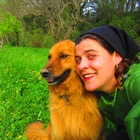18x


3x
The Dinosaur Museum Nargó Coll is a museum dedicated to palaeontology located in the historic centre of the village of Coll de Nargó in Catalan pre-Pyrenees.
The Museum of Coll de Nargó Hall is also known as the "KT boundary" (Sala Límite K-T). This name - the KT boundary is a geological time when Cretaceous dinosaurs disappeared and the Tertiary started, which was dominated by large mammals. K is the traditional abbreviation for the Cretaceous period, and T is the abbreviation for the Tertiary period. It was this moment in time, in which the specimens found in the town were buried and were discovered fossilized 65 million years later.
The KT boundary Room Coll de Nargó is a museum that describes the process by which the dinosaurs became extinct on Earth and presents a sample of specimens found in the local sedimentary deposits. The most prominent would be dinosaur eggs from the family of Megaloothidae or Titanosaurus. They were a long-necked dinosaurs, flexible, small head and feet of elephant type found in Sallent River Valley, close to the location of the museum .
It should be noted that the site, despite having been exposed for years to a massive plundering by scientists from various countries like Germany or France, remains to this day one of the most important in the world. Together with the desert Gobi in Mongolia, Montana in the U.S. or Patagonia in Argentina. We can nowadays enjoy it because the Coll de Nargó area in the Cretaceous period was an area of a coastal type, with a very warm climate and a dense vegetation. That favoured the stakes in this group of dinosaurs. Also because a potential flooding and subsequent lack of oxygen enabled these eggs to be buried and then fossilized and mineralized avoiding oxidation.
The museum consists of several rooms. On the ground floor there are two rooms devoted to dinosaurs (terrestrial and marine) and other outreach venues.
The Cretaceous Mirador is another part of the museum, which is located in different place. It is outdoors and has a free entry, located directly on the River Valley Sallent, which were found many of the eggs from the start and fossilized plants and ferns.
Source of description:
planerGO





 2011-11-02 19:24:56
2011-11-02 19:24:56







 3x
3x